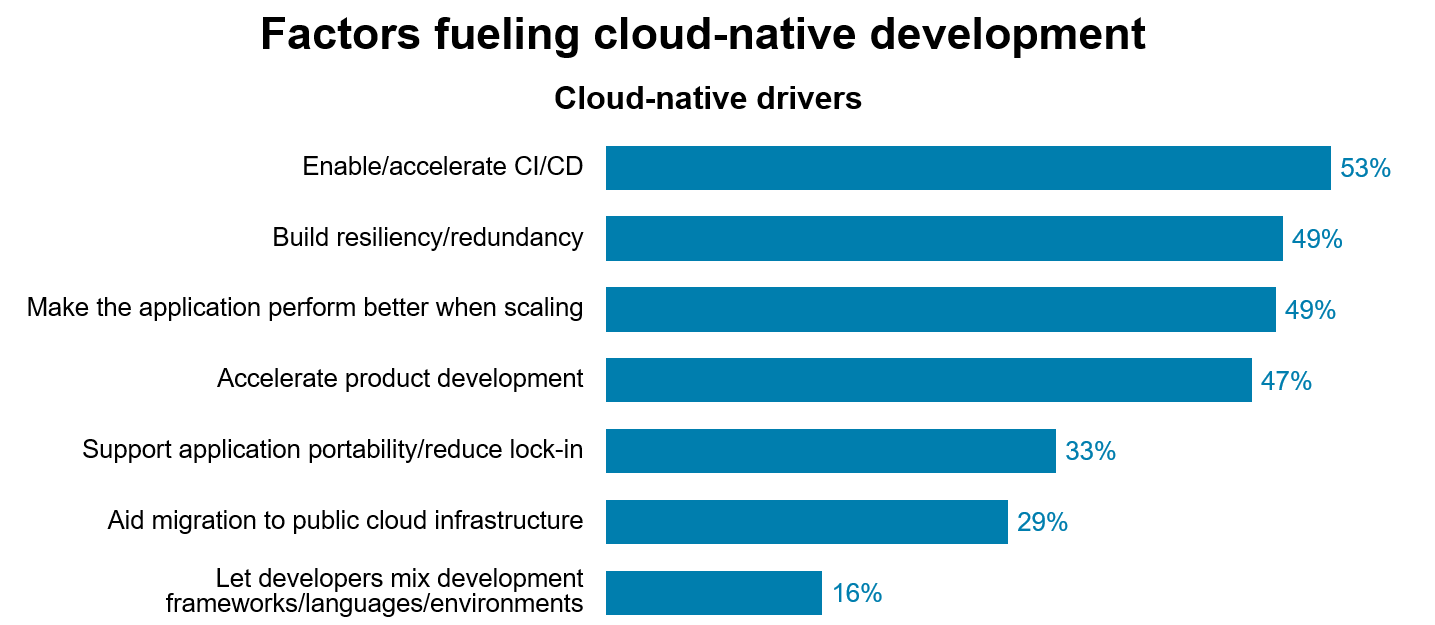
There is no denying the primacy of cloud computing in almost every business operation today, across nearly every industry. As entry costs move increasingly under control and barriers to adoption continue to erode, organizations large and small are retiring on-premises infrastructure and embracing cloud concepts as never before. Deploying one’s IT environment largely or fully in the cloud is no longer a pie-in-the-sky idea.
In presenting research findings to 451 Alliance members whose experiences were captured in cloud surveys this year, Director Melanie Posey spoke of the dramatic increases in cloud usage that are projected to continue.
“Looking toward 2023, 56% of you have said you will execute your workloads primarily in public cloud environments,” said Posey, 451 Research’s director of cloud transformation research, in her recent webinar on the subject.
That figure represents an explosion from the 18% presently using SaaS and hosted applications for their primary workloads and the 13% now operating their infrastructure and platforms primarily in the cloud.

Agility and speed to market continue to drive cloud adoption
In addressing the fundamental drivers of cloud, Posey discussed the “realization that faster provisioning and resource scalability is something that definitely yields business dividends, in the sense that you can set up infrastructure to deliver value to customers, employees, suppliers and partners when you have a public cloud infrastructure that lets you scale up and provision quickly.”

The agility of the cloud affords its users the chance to quickly build new applications, then try them out efficiently and inexpensively. “Public cloud infrastructure allows you to fail fast…or succeed if the idea actually has legs,” Posey said.
Cloud native leverages agility to the max
To fully capitalize on the cloud’s inherent agility, enterprises are increasingly turning to cloud-native application development, producing software that optimizes the scalability and dynamic nature of the cloud.
“Why go cloud native?” Posey asked. “The biggest reason is simply to create more of a DevOps environment in your organization, to develop software in a more agile manner and to facilitate this fail-fast, succeed-faster type of paradigm.”

DevOps and cloud-native application development are among the technologies at the cornerstone of most digitally mature organizations. “The fuel, if you will, for digital transformation is the place that cloud-native development has taken the greatest hold,” Posey observed.
So, cloud computing is inevitable, right?
Many are postulating that running a business without the use of the cloud is tantamount to doing laundry without a washing machine. It may not strictly be essential to performing the task, but it makes the job dramatically easier.
In fact, one webinar attendee asked whether Posey viewed the cloud as “unstoppable.”
Well, yes…and no. Posey argued that there are still legitimate reasons to refrain from an all-in approach to public cloud adoption, but allowed that public cloud usage in concert with private cloud operations – the very definition of hybrid cloud – represents the sort of manageable, controlled IT protocol that is far more likely to experience unrestrained growth.
“I wouldn’t say that public cloud is necessarily unstoppable,” responded Posey. “Public cloud plays a role in the execution of certain workloads, [but] private cloud – closer to the edge of a network or a business process – is also playing a key role. I think hybrid is here to stay, and we at 451 always say hybrid is the organizing principle of IT going forward.”
If you missed this webinar, you can check out the full presentation here: Journey to the Cloud: What Comes Next? Like all research content on the 451 Alliance portal, it’s available on demand, and at no cost, to all Alliance members. Our quantitative and qualitative studies enable us to gather first-hand experiences from IT pros like you and share the findings and analysis with your peers. Our sincere thanks for contributing your knowledge within the community.
Want insights on cloud computing trends delivered to your inbox? Join the 451 Alliance.

